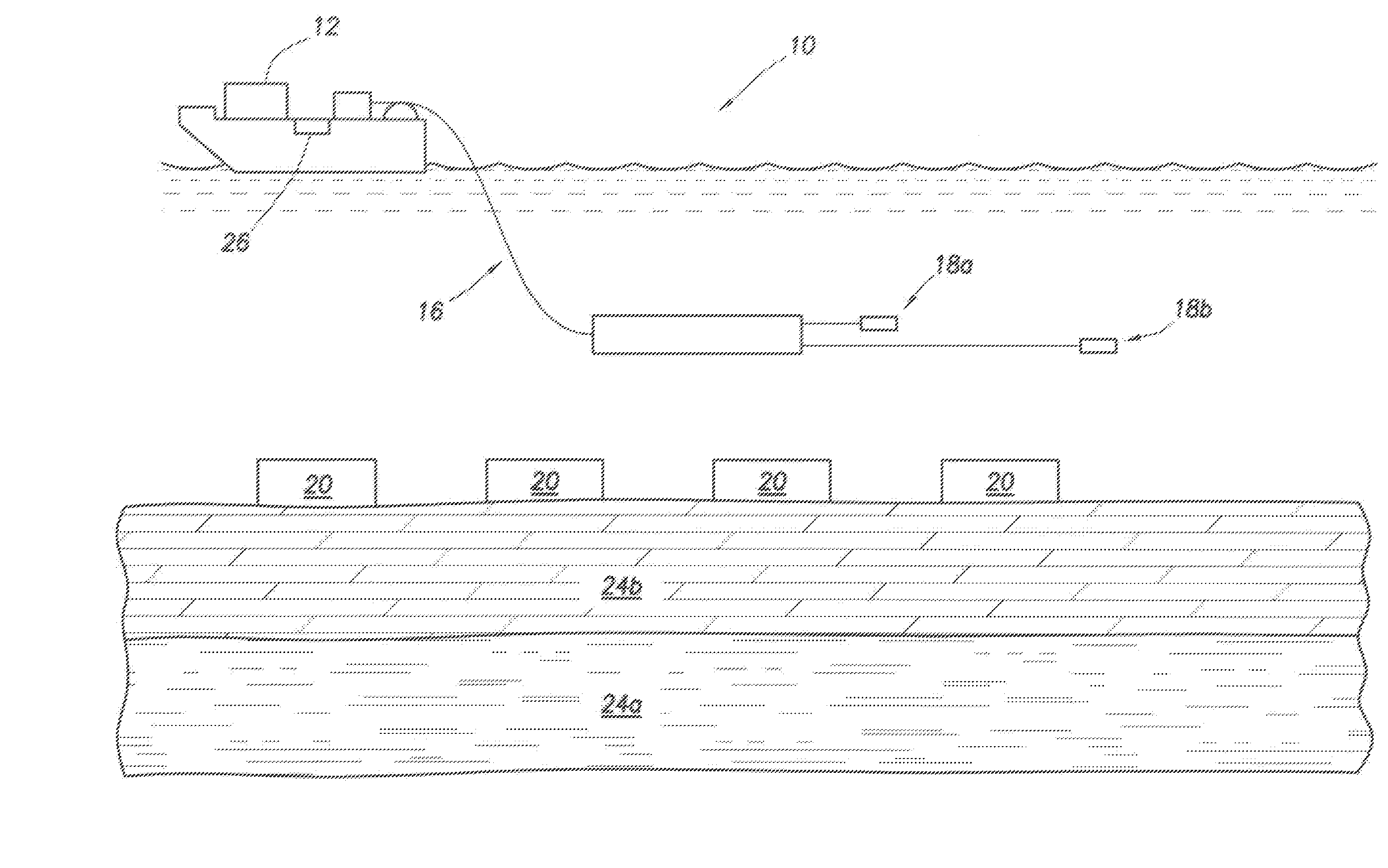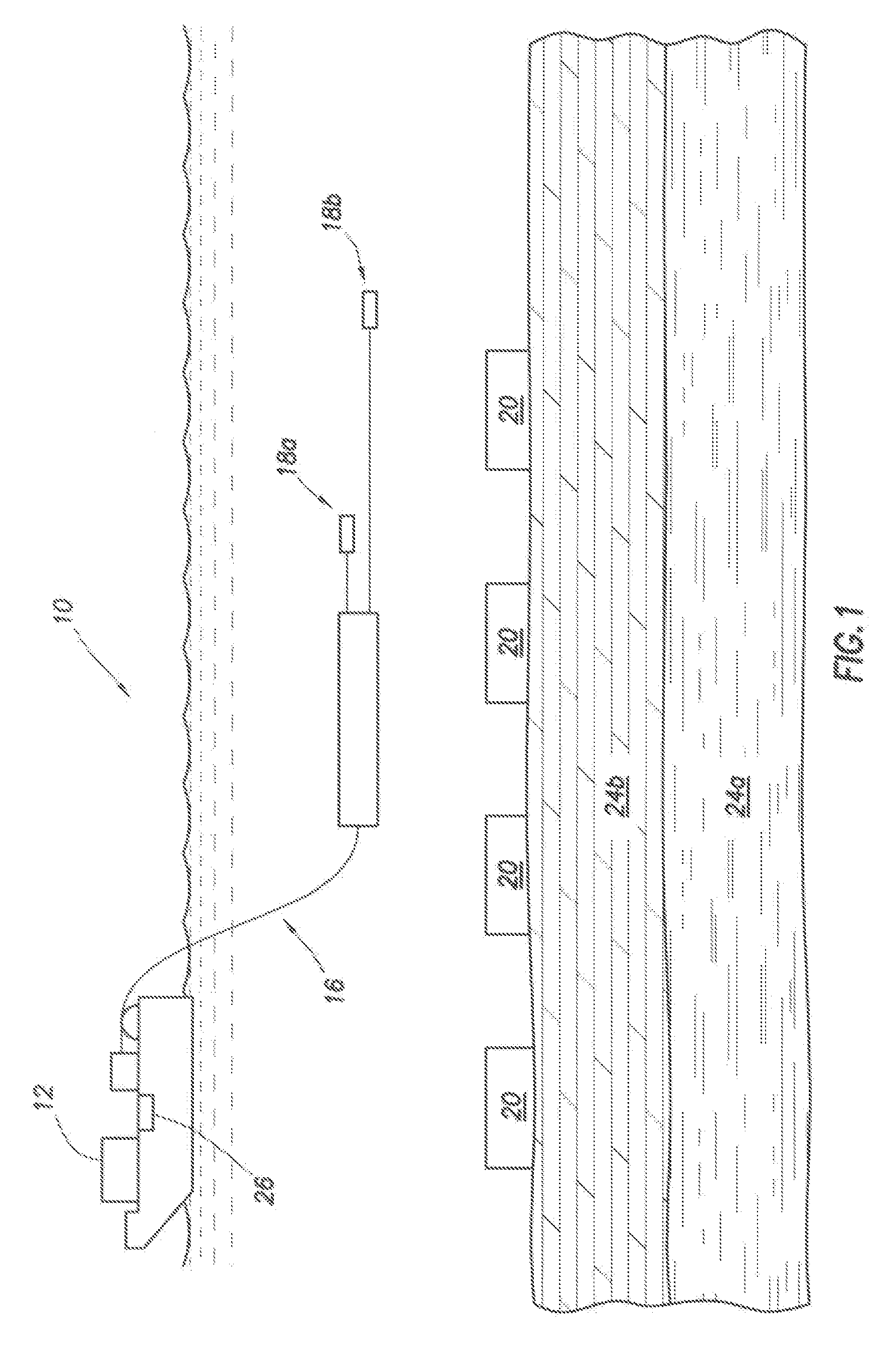Time Segmentation of Frequencies in Controlled Source Electromagnetic (CSEM) Applications
a technology of controlled source electromagnetic and time segmentation, applied in the field of hydrocarbon exploration, can solve the problems of time-consuming and uneconomic multiple passes over the subsurface formation, large reduction of energy generated at any particular frequency using this method, and low noise ratio
- Summary
- Abstract
- Description
- Claims
- Application Information
AI Technical Summary
Benefits of technology
Problems solved by technology
Method used
Image
Examples
Embodiment Construction
[0020]Refer now to the drawings wherein depicted elements are not necessarily shown to scale and wherein like or similar elements are designated by the same reference numeral through the several views.
[0021]FIG. 1 illustrates a CSEM system 10 for measuring the resistivity in subsurface formations 24 in accordance with an embodiment of the present invention. System 10 includes a vessel 12 towing a transmitter or source 14 via a cable 16. System 10 includes receivers 20 positioned on the sea floor 22 above subsurface formations 24. For exemplary purposes, formation 24b is a shale formation and formation 24a is an oil-sand.
[0022]Transmitter 14 includes electrodes 18a, 18b. Transmitter 14 is configured to generate a time-varying current. Electrodes 18a, 18b are coupled electrically via the sea water, which acts as a conductor thereby forming a circuit carrying a time-varying current generated by transmitter 14. Transmitter 14 is configured to generate an output current at various freque...
PUM
 Login to View More
Login to View More Abstract
Description
Claims
Application Information
 Login to View More
Login to View More - R&D
- Intellectual Property
- Life Sciences
- Materials
- Tech Scout
- Unparalleled Data Quality
- Higher Quality Content
- 60% Fewer Hallucinations
Browse by: Latest US Patents, China's latest patents, Technical Efficacy Thesaurus, Application Domain, Technology Topic, Popular Technical Reports.
© 2025 PatSnap. All rights reserved.Legal|Privacy policy|Modern Slavery Act Transparency Statement|Sitemap|About US| Contact US: help@patsnap.com



